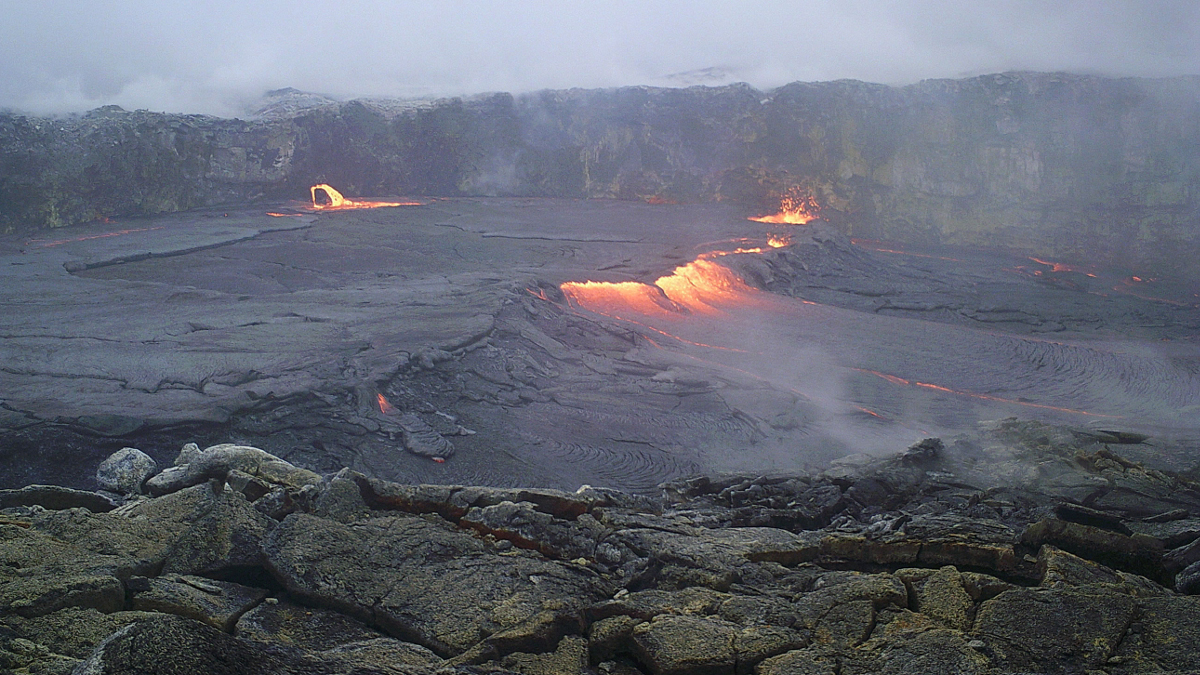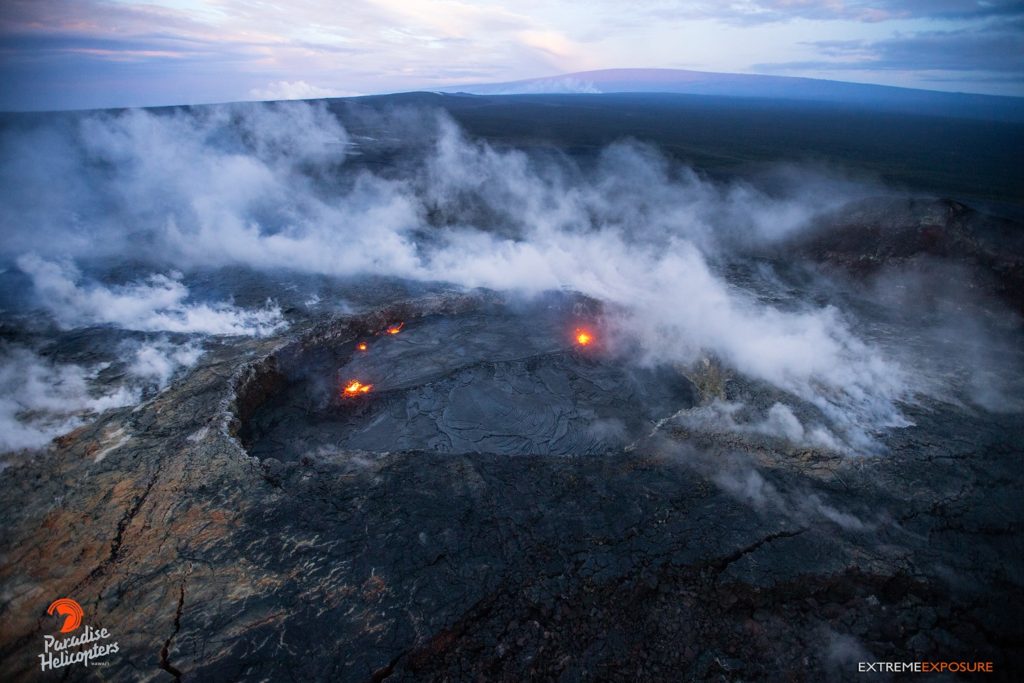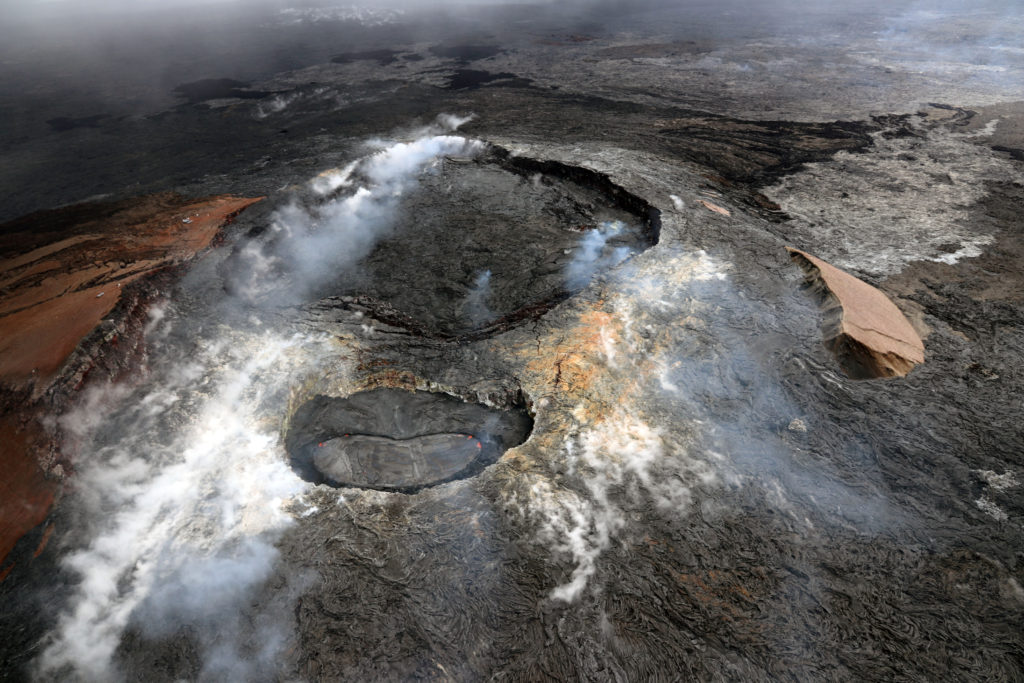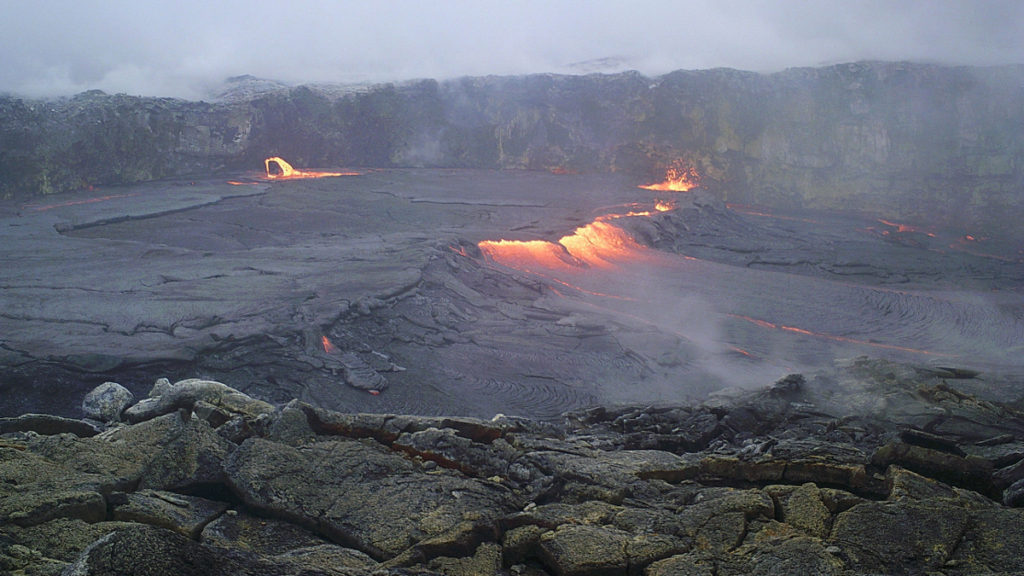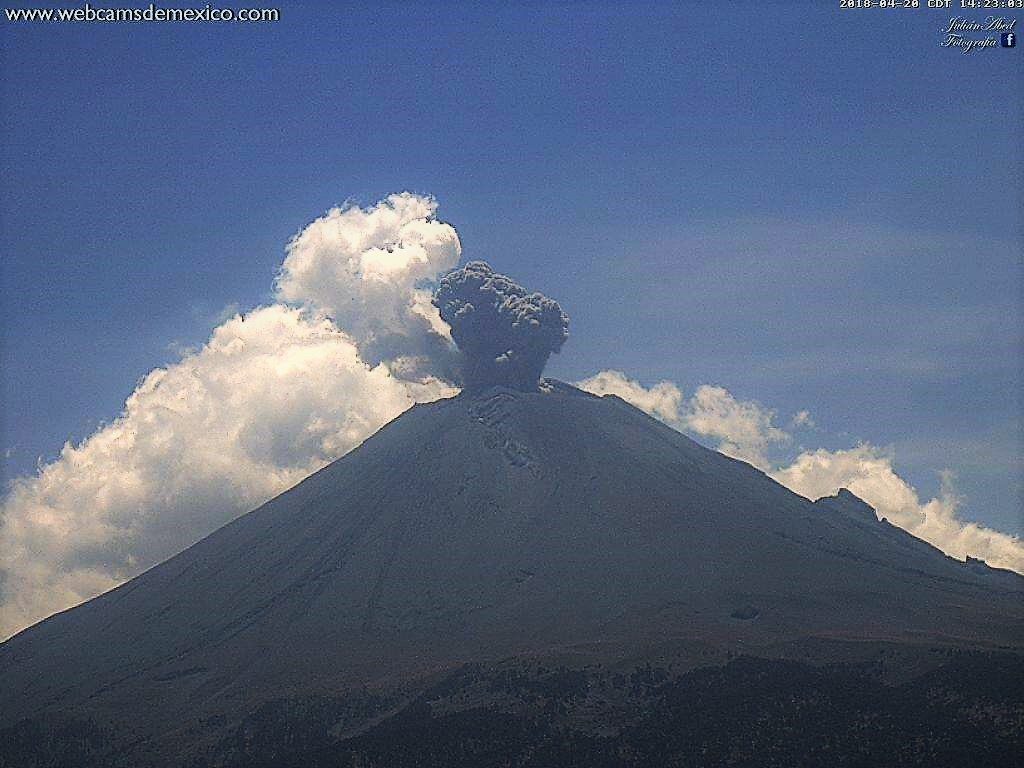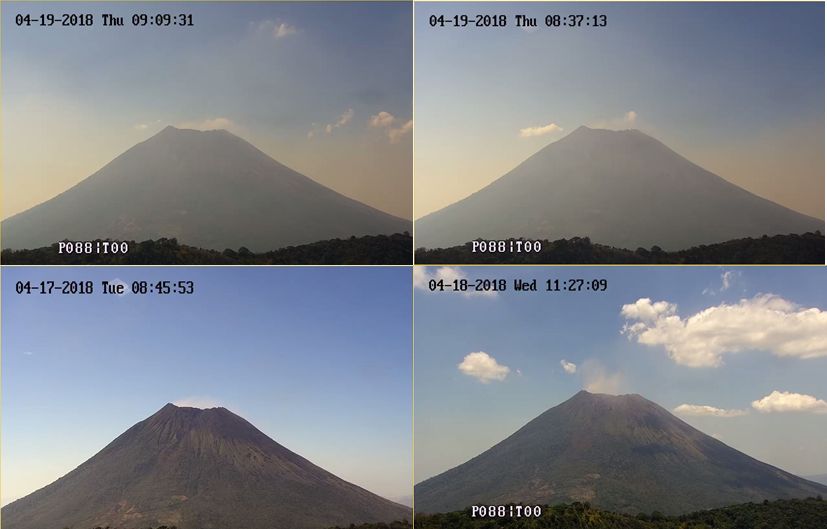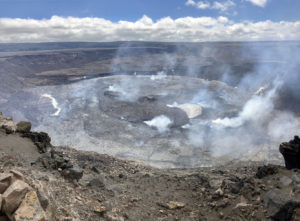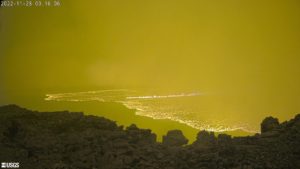April 21 , 2018.
Aira ( Sakurajima ) Japan :
31,593 ° N, 130,657 ° E
Altitude: 1117 m
The JMA reported that there were four events and nine explosions in the Minamidake crater (on the Sakurajima volcano in the Aira caldera) from 9 to 16 April. Tephras were ejected as far as 1.3 km from the crater and plumes rose up to 2.5 km above the edge of the crater. The incandescence of the crater was visible most nights. The alert level remained at 3 (on a 5-level scale).
The Sakurajima was the site of a strong explosion on April 19 at 6:47, accompanied by a plume rising to 2,300 meters above the crater Minamidake.
This is the 49th episode of the year.
Source : GVP, B Duick.
Photo : Tomoaki Iwakiri
Kilauea , Hawai :
19°25’16 » N 155°17’13 » W,
Summit Elevation 4091 ft (1247 m)
Current Volcano Alert Level: WATCH
Current Aviation Color Code: ORANGE
Activity Summary:
Eruptions continue at Kīlauea Volcano’s summit and East Rift Zone. The summit lava lake level rose slightly overnight as summit tiltmeters recorded a reversal from deflationary tilt to inflationary tilt. Puʻu ʻŌʻō cone continues the inflationary trend of the past several weeks, and the Episode 61g lava flow is active above Pulama pali. The flow does not pose a threat to nearby communities at this time. There is currently no active lava on the pali, the coastal plain, or entering the ocean.
Pu‘u ‘O‘o’s rising lava lake has created a perched pond, as its surface is now higher than the surrounding floor of the west pit. The entire surface within, has risen more than 20 feet!
Summit Observations:
Summit tiltmeters recorded very little change in tilt most of yesterday, but they have recorded inflationary tilt since late last night. When measured early last night, the lava lake level was about 14 m (46 ft) below the rim of Overlook crater;the level had risen 11 meters (36 ft) from the previous day and is visible from Jaggar Museum this morning. Seismicity in the summit area is within normal, background rates, with tremor amplitude fluctuations associated with lava lake spattering. Elevated summit sulfur dioxide emission rates persist.
A brief break in the rain allowed for some clear views of Pu‘u ‘Ō‘ō on Kīlauea Volcano’s East Rift Zone. Since mid-March, Pu‘u ‘Ō‘ō tiltmeters have been recording inflation, and uplift of the crater floor is visible in HVO webcams. The lava pond within the west pit (foreground) has also risen several meters (yards) and has overflowed onto the floor of the west pit numerous times.
Puʻu ʻŌʻō Observations:
Inflationary tilt continues to be recorded by a tiltmeter at Puʻu ʻŌʻō, continuing the inflationary trend of the past several weeks. Good weather yesterday morning allowed geologists to observe changes at the west pit lava pond—overflows of the pond have built it several meters (yards) above the west pit floor. The pond level is now 7 m (23 ft) higher than it was in late March. This is consistent with the overall inflationary trend and uplift of the main crater floor at Puʻu ʻŌʻō. Webcam views showed no new flows in the crater in the past 24 hours. Seismicity is at normal, background levels. The sulfur dioxide emission rate from the East Rift Zone vents has been steady over the past several months and remains significantly lower than the summit emission rate.
The growth of the lava pond within the west pit
Lava Flow Observations:
There is no lava flow activity from the Episode 61g lava flow on the coastal plain or pali, and no lava is flowing into the ocean. Lava flow activity continues on the upper flow field, above the pali and closer to Puʻu ʻŌʻō, and does not pose a threat to nearby communities at this time. Areas of the upper flow field with active lava flows are located within the Kahaualeʻa Natural Area Reserve, which has been closed to the public by DLNR since 2007 due to volcanic hazards.
Source : HVO
Photos : Bruce Omori , HVO.
Popocatépetl , Mexico :
April 20, 11:00 am (April 20, 16:00 GMT)
During the last 24 hours, by the monitoring systems of the Popocatepetl volcano, 77 low intensity exhalations accompanied by water vapor and gas have been identified. During the night, we observe an incandescence which increases at the time of certain exhalations. In addition, two volcano-tectonic earthquakes were recorded yesterday at 20:53 and 21:01 hours respectively with amplitudes of M1.5 and M2.0. Finally, five explosions, three yesterday at 10:11, 13:35 and 18: 01 and two today at 03:07 and 07:28.
At the time of this report, it is observed that the wind disperses the emissions towards South-South-West.
CENAPRED asked not to approach the volcano and in particular of the crater, because of the risk of falling of projectiles and in case of heavy rain to remain far from the bottom of the ravines because of the danger of landslides and mudslides .
The volcanic warning light of the Popocatepetl volcano is located at Amarillo Phase 2.
Source : Cenapred.
Photo : webcamdemexico
San Miguel ( Chaparrastique) , El Salvador :
Special Report No. 3
Decrease in the seismic activity of the Chaparrastic volcano
Date and time of publication: 2018-04-20 12:30:00
During the last seven days, periodic changes have been observed in the seismic behavior of the Chaparrastic volcano. The emergence of discrete earthquakes was observed between 13 and 17 April and the presence of discontinuous volcanic tremors was observed between the afternoon of 17 April and the 18, during which the degassing increased discontinuously and low.
The behavior described above indicates the presence of magmatic fluids moving in the internal ducts of the volcano, causing large increases in seismic vibration that reached maximum values of 216 RSAM units on average over one hour, exceeding the threshold of 150 units. .
Figure 1. The seismograms recorded by the VSM station during the period from April 13 to 20, 2018, show the changes detected in the seismic behavior inside the volcano.
Figure 2. The images captured by the surveillance camera located on the Pacayal volcano, recorded the presence of gas emanating from the central crater.
During the last 24 hours, the seismic vibration has fluctuated between 61 and 78 RSAM units on average over one hour. These values indicate a decrease in activity, however, because of the behavior that the volcano has exhibited on previous dates, it is not excluded that the activity will continue to fluctuate in the weeks or months to come.
Figure 3. Behavior of recorded seismic amplitude between April 14 and 20, 2018.
In conclusion, the volcano continues to present periodic changes of seismicity related to the emission of gas pulses due to the presence of magmatic fluids in the system, so it is not excluded that in the weeks or months to come the same behavior is maintained.
The Ministry of Environment and Natural Resources (MARN) continues the systematic monitoring of the volcano and maintains close communication with the Directorate General of Civil Protection and the Network of Local Observers.
In addition, he calls people in general to stay away from the top of the volcano, as abrupt changes in behavior often occur and can cause physical damage.
The next report will be published on Friday, April 27th of this year.
Source : Marn

